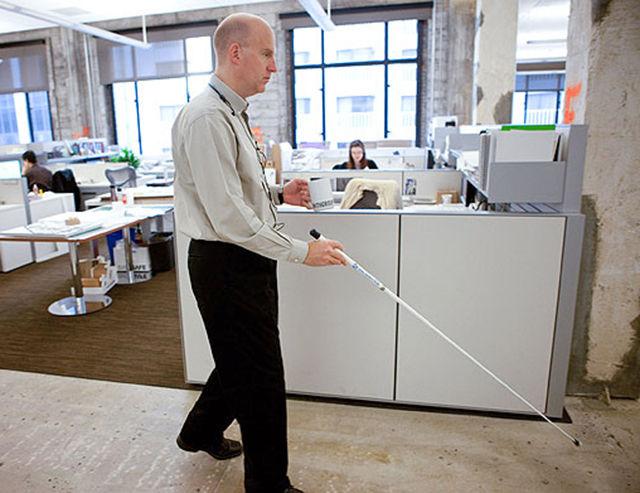Though being visually impaired in a highly visual field may sound discouraging, for architect Chris Downey, it’s just another part of his creative inspiration.
Downey, 51, lost his vision in March 2008 after undergoing surgery to remove a benign brain tumor that was causing damage to his optic nerve.
“It was total sight loss, instantaneous and unexpected,” Downey said in a phone interview with the Technician.
After Downey lost his vision he said his biggest question was how he was going to keep doing what he loved.
“At first I felt discouraged when the doctor told me there was nothing else they could do,” Downey said. “I did not want to change careers. I’ve always been committed to architecture.”
Downey even ended up losing his job toward the end of 2008 and by January 2009 he had been blind for not even a year, had no job and had a family with a young son at home.
Fortunately it was not too long before he found out about a firm wanting to build a rehabilitation building for blind veterans. Downey felt a personal tie and was very interested.
“I embraced my disability in the work I was doing,” Downey said. “It ended up having real value, and I knew I wanted to build a career out of that.”
According to Downey, he likes to do things on his own.
“I travel and get around independently,” Downey said. “The one hang-up is that I can’t do my drawings on the computer but I can read them on my own. I used wax sticks for my designs, which as you work with them they get a little tacky and you can stick them to the paper. Then I photograph it with my cell phone.”
Downey graduated from NC State in 1984 with a Bachelor of Environmental Design in Architecture. During his time at NC State, Professor Patrick Rand took notice of Downey’s innate talent.
Rand taught Downey during his junior year in the fall of 1983. During that time building for sustainability was fairly unfamiliar, according to Rand.
“We had a design competition amongst the studio classes to design passive solar housing using concrete block as the primary material,” Rand said. “They were supposed to design efficient and affordable housing that any normal family might be able to access.”
Downey ended up winning the competition.
“He was an outstanding student, there’s no question about it,” Rand said. “We all knew he had huge potential.”
Downey said that kind of problem solving and “creating delightful and functional environments,” was what got him excited about the work initially.
“Now I am able to engage in [my work] differently,” Downey said. “I can think about architecture differently. It’s interesting as an architect to become a part of the disabled community and I can pay more attention to the accessibilities aspect of it.”
Although he is now completely blind, Downey has taken his situation and used it as inspiration. He now works as a consultant for many architecture firms that involve projects designed to improve accessibility for the disabled.
“I completed a project this past year called the San Francisco Independent Living Resource Center [SFILRC], and that was really the first and only project to date that I have served as the lead architect,” Downey said.
The SFILRC is a nonprofit that provides services, training and advocacy for people with all kinds of disabilities. Most of the staff and their clients have some sort of disability, sometimes more than one.
Another aspect of Downey’s reinvented career involves his drawings. Since they’re all printed in tactile form, he said he does the printing at home.
Another method Downey has found beneficial is his original use of wax sticks to help with interpreting his drawings.
“There is nothing I can do currently to draw into the computer,” Downey said. “I rely on working with others to do the work in the computer, typically the firms that I consult with.”
The firms send him drawings in PDF form and he then sends it off to his printer, which prints it out in a way that is similar to brail.
Aside from his successful career in architecture, Downey is also on the board of directors for the San Francisco Lighthouse for the Blind, the California Commission on Disability Access and teaches at the University of California, Berkeley.








